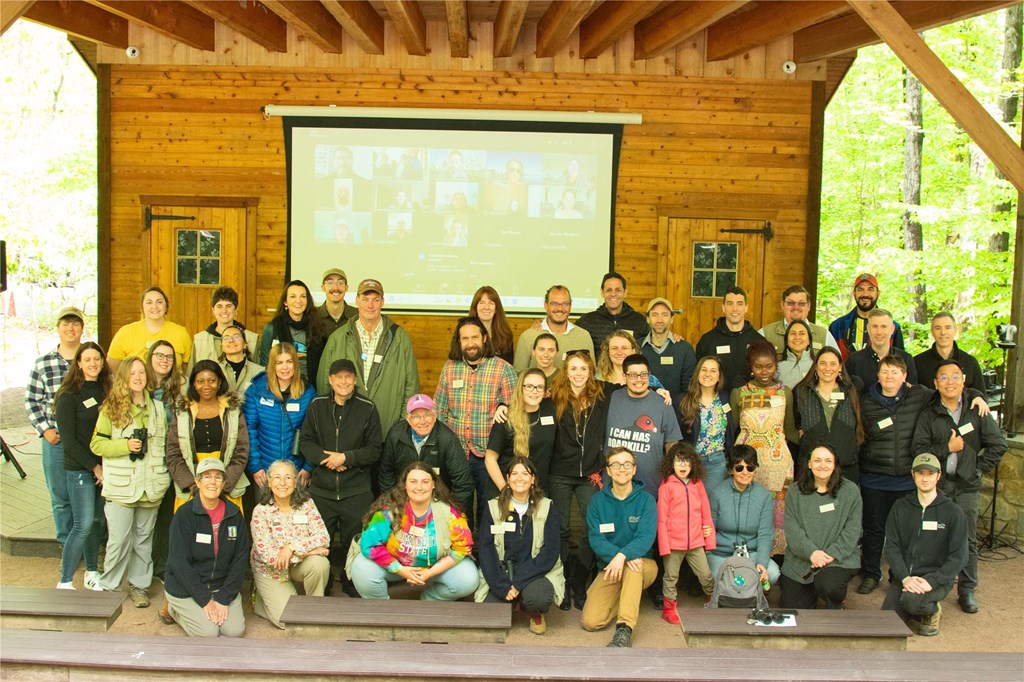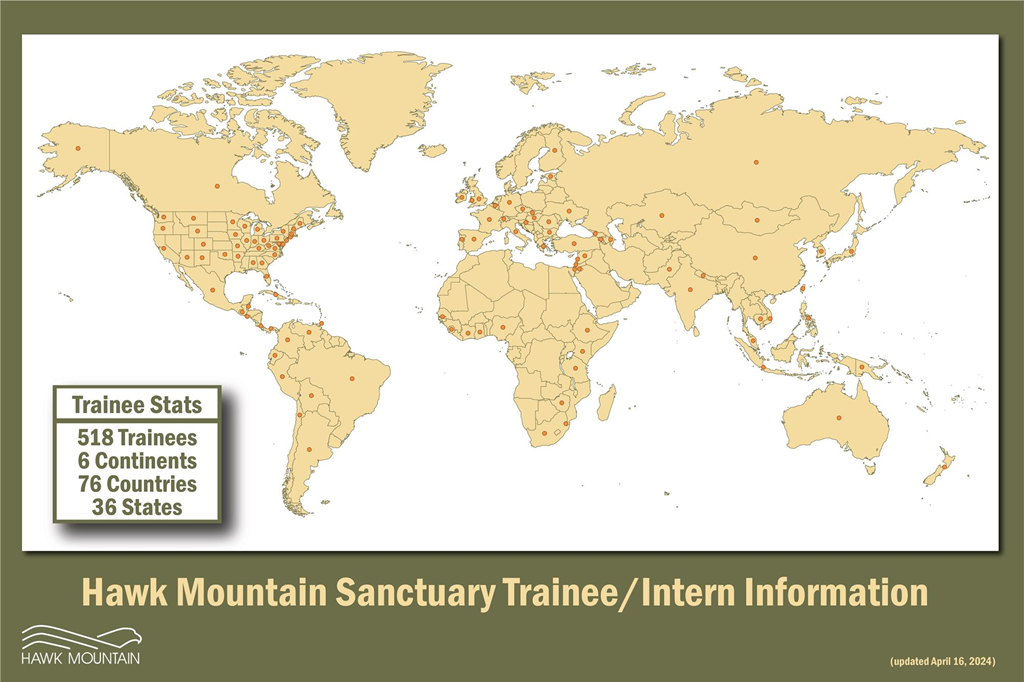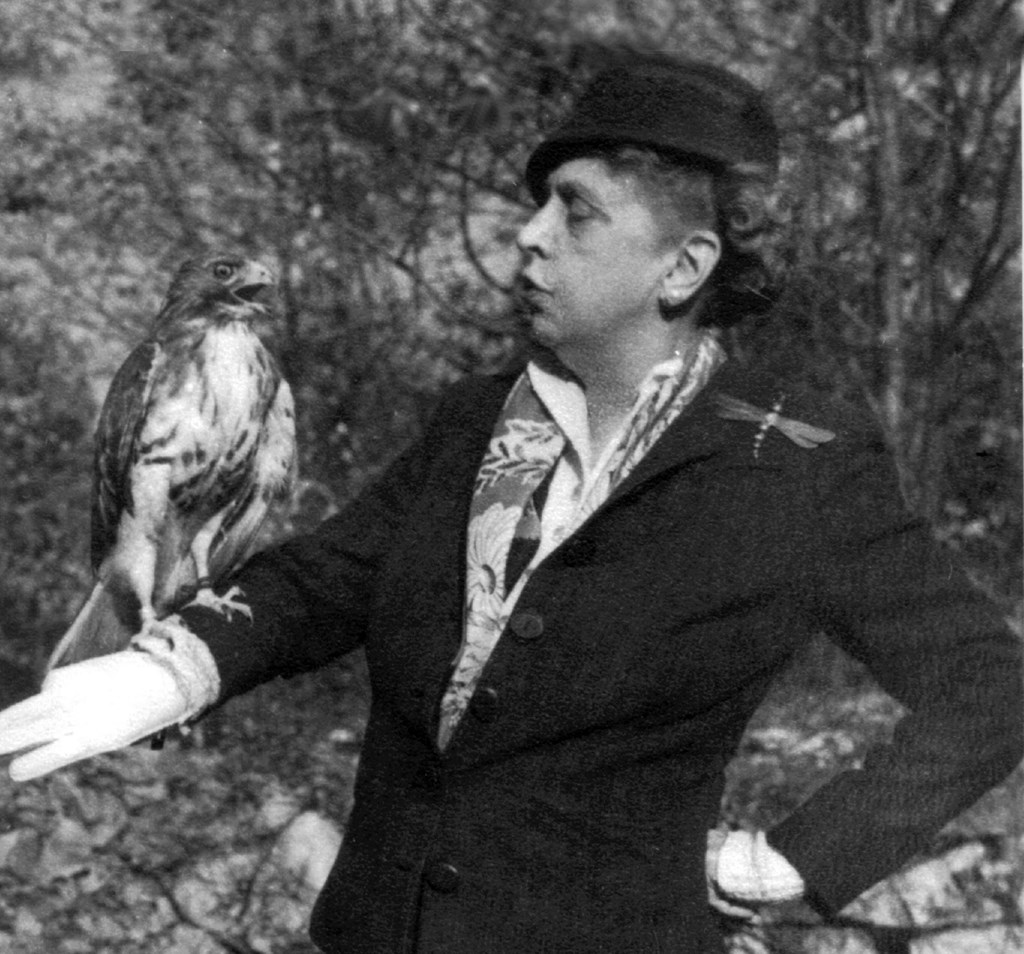Sanctuary Hosts First Trainee Reunion
Posted on May 22, 2024 in General

Did a small Pennsylvania sanctuary overlooking two tiny rural towns launch the environmental movement? Hawk Mountain Sanctuary offers a resounding yes. Recognized worldwide as the first refuge for birds of prey, and a leader in global raptor conservation, Hawk Mountain celebrated 90 years with its first-ever international trainee reunion held Saturday, May 11.
More than 40 intern or trainee alumni from 13 countries and at least 12 states descended upon the Sanctuary, some from as far away as Malaysia and Zimbabwe, and with more than a dozen participating virtually. Trainees representing five continents spoke throughout the day, sharing the conservation success stories and challenges that occur for raptors around the world.
“Hawk Mountain itself is mystical and wonderful, but even more amazing is its worldwide reach,” recalled Board Member Stephen Edge, the grandson of Sanctuary founder Rosalie Edge. Edge spent the weekend nearby to attend each day.
“We heard from many trainees from over the past 35 years, including scientists and conservationists from the U.S., Mexico, Central and South America, Central and Southeast Asia, and Africa and all showed us how their life’s work has stemmed from their formative time at Hawk Mountain, some early in their careers,” he added.
The Program and the Presentations

Hawk Mountain’s acclaimed International Trainee Program is a three-month-long residential and fully immersive experience that has produced some of the most impressive names in raptor conservation today. To date, more than 500 up-and-coming conservationists from 76 countries on six continents have graduated the program.
Hawk Mountain alumni represent current leaders in bird conservation, local to global. Speakers and the trainees attending arrived to participate in the annual Friday evening Benefit, then gathered the next day for the Trainee and Intern Symposium, a special day to discuss how Hawk Mountain and its friends can help advance raptor conservation. The event was open the public and talks were geared for the general, non-scientific audience so everyone who attended could learn of some of the challenges and successes in conservation globally.
Speakers and their linked presentations included:
Jennie Duberstein, Ph.D., U.S., Education Intern 1996
Ernesto Ruelas Inzunza, Ph.D., Mexico, Research Intern 1990
Diego Méndez, virtually from Bolivia, Conservation Science Trainee 2015
Wouter Vansteelant, Ph.D., Belgium, Leadership Trainee 2011
Martha Mutiso, virtually from Kenya, Conservation Science Trainee 2010
Chong Leong Puan, Ph.D., Malaysia, Conservation Science Trainee 2013
Merlyn Nomusa Nkomo, Zimbabwe, Conservation Science Trainee 2017
Todd Katzner, Ph.D., U.S. virtually from Australia, Leadership Trainee 2003
Ana Maria Castaño, Colombia, Conservation Science Trainee 1998
Served as morning host and emcee
Ruth Tingay, United Kingdom, Research and Leadership Trainee 1994
Served as afternoon host and emcee
Before departing, the alumni regrouped to discuss ways Hawk Mountain can support their work, make the program stronger, and foster global raptor conservation. Suggestions were recorded and alumni were unanimous in saying they wanted to maintain the connections with Hawk Mountain and other alumni. The weekend ended with great excitement and commitment from all attending.
Hawk Mountain's Conservation Legacy

Hawk Mountain Sanctuary has a dramatic history as a popular shooting stand in the 1920s and 30s. It was not until 1933 that word of the shooting reached New York conservationist Rosalie Edge who visited the Mountain in 1934 and leased with an option to buy 1,400 acres where the most shooting occurred. She immediately installed a warden named Maurice Broun, closed the property to gunners, and opened the land as a wildlife Sanctuary for the public to enjoy.
It is argued that here on this mountaintop grew for the first time the notion that environmental consciousness is for everyone, not just the experts. At Hawk Mountain, ordinary people were awakened to their extraordinary duty to protect and appreciate nature. Now dubbed a “hawkwatcher’s mecca,” today Hawk Mountain Sanctuary is a living legend to those in the birding and conservation communities.
Vigilance and persistence ultimately stopped the shooting of raptors on Pennsylvania ridgetops, but it would not be until after Rosalie Edge’s death that all birds of prey were protected under the Federal Migratory Bird Treaty Act in 1972.
Since then, Hawk Mountain has expanded its conservation outreach through programs in public education, conservation science, professional training, forest management, and long-term monitoring, but the Sanctuary itself operates much the same as it did in 1934. After 90 years, it is safe to say that Hawk Mountain Sanctuary is one of the single greatest private conservation success stories of our time.
Laurie Goodrich, Hawk Mountain’s Sarkis Acopian Center for Conservation Learning Director of Conservation Science, stated “Raptors are still being shot in Europe and South America today. Hawk Mountain trainees are on the ground fighting for conservation, just as our founders Rosalie Edge and Maurice Broun did decades ago. In this event we celebrated the trainee program and the trainees and the work they are doing for raptors every day both here and across the globe.”